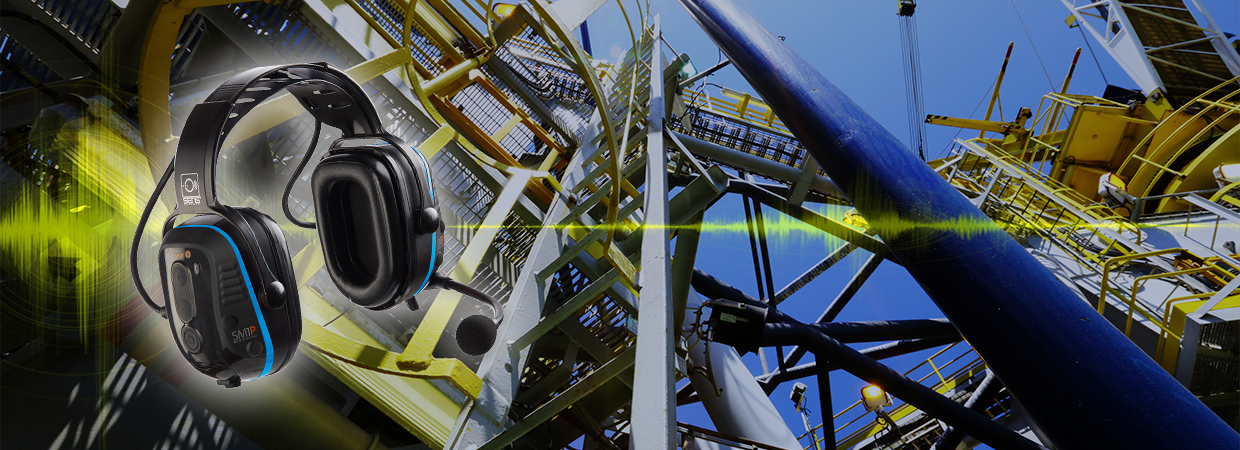- Home
- Blog
- High-Noise Communication
- Critical Communication Challenges in High Noise

Critical Communication Challenges in High Noise
A noisy environment is one of the main stress triggers for employees and leads to reduced productivity. In high-noise environments, sounds coming from machinery or equipment produce high or extreme noise levels that can adversely affect communication between workers. Common practices like shouting at others or asking them to talk loudly are barely effective. If employees cannot alert each other, accidents can occur and cause injuries. As OSHA requires workers to wear hearing protection in environments where noise reaches or exceeds 85 dB(A), workers run into issues by removing their hearing protection when they need to communicate with one another. Most employees have a critical requirement to communicate with colleagues and traditional hearing protection headsets restrict the workers' ability to communicate. Therefore, workers need a solution that provides the correct level of hearing protection, while allowing employees to communicate and have situational awareness.
How Sensear Improves Safety and Communication
When working in high-noise environments, there are many contributing factors to the safety of a worker. Sensear drives a new approach to occupational hearing conservation. By combining the most innovative communication systems with the very best hearing protection technologies, Sensear's Smart Communication Headsets and Earplugs allow workers to have seamless face-to-face conversations, headset-to-headset on their two-way radios or Bluetooth® wireless technology enabled devices with other workers in the area, all while protecting their hearing using industrial quality noise-canceling headsets and maintaining complete 360° awareness of approaching vehicles, alarms, or other hazards with SENS® Technology.
1. Hearing Protection
All Sensear devices have passed the required hearing protection industry certifications to ensure effective communication with hearing protection. When it comes to noise, there are three main types of noise frequencies that Sensear's SENS® Technology analyzes: Broadband Noise (anything from speech frequencies to loud machinery frequencies, where the noise has random or broad patterns), Impulse Noise (characterized by sharp, brief increases in dB volume, causing a temporary or permanent hearing loss), and Tonal Noise (flat noise that occurs at a single frequency). For all these types of noises, SENS® will recognize each frequency and limit their maximum output to 82 dB(A) in noise up to 105 dB(A), and for the Extreme Noise Headsets, up to 120 dB(A).
2. Personal Safety & Situational Awareness
Sensear delivers 360° binaural situational awareness with SENS® Technology, allowing users to stay alert for critical noises such as large moving equipment, alarms, forklifts, or other hazards. By providing hearing protection while still allowing directional alertness, SENS® provides 360° situational awareness to ensure that users have a complete awareness of what is happening around them.
3. High-Noise Communication Solution
Sensear delivers a total high-noise communication solution by ensuring users can communicate face-to-face, at short and long distances via a two-way radio, Bluetooth® wireless technology enabled mobile device, and/or other communication system. In particular, Sensear's headsets and smartPlugs™ prioritize two-way communication over all other frequencies, even with the volume limiter on, which lowers all in-ear noise exposure to a safe hearing level of 82 dB(A). This allows users to always be alerted to emergency broadcasts over their two-way radio channels.
Sensear's Modes of Communication
From ruggedized digital smartphones to digital two-way radios, the industrial communication arena adopted digital communication technologies because of their flexibility, quality of performance, and ability to enable new functionality with ease. Sensear's communication headsets are at the forefront of digital technology, being the first industrial headset manufacturer to embrace smart digital signal processing as our core technology backbone. The result is enhanced performance, greater flexibility, better speech separation capability, and the availability of connecting to a wide range of digital and analog communication devices. Sensear offers three modes of face-to-face communication: Bluetooth®, two-way radio, and short-range.
1. Bluetooth® Communication Solutions
The SM1P elevates Sensear’s portfolio of smart headsets by providing some new features and benefits to improve safety, reliability, and efficiency. This industrial headset offers a robust design adhering to higher noise reduction standards of up to 27 dB NRR depending on the headset-wearing style. Its upgraded Bluetooth® module allows for the streaming of audio to the headset, a valuable feature for users that listen to music during long work shifts in high-noise environments.
2. Two-Way Radio Communication Solutions
The SP1R is among the many of Sensear's two-way radio communication solutions and is a completely redesigned in-ear hearing protection and communication solution in a small and compact yet rugged package. The SM1R series headset, similar to the SP1R, is a two-way radio over-the-ear communication solution. Built specifically to enhance two-way radio communications in high-noise environments, these solutions are powered by your two-way radio, thus eliminating the need for batteries inside the units. Like the rest of Sensear's two-way radio solutions, the SP1R and SM1R feature Sensear's patented SENS® Technology.
3. Short-Range Communication Solutions
Short-range accesses FM radio frequencies, allowing workers to communicate at the same frequency without the need for a radio. Each SR channel bank allows for up to 8 groups. These groups could be site tour groups, on-the-job training groups, or workgroups. Whatever the use, SR allows for as many users as you want on a single-channel bank. Short-range allows workers to have headset-to-headset communication up to a range of 150 feet. This makes Sensear’s SM1P headsets the perfect hearing communication solution for keeping a social distance in high-noise environments.









